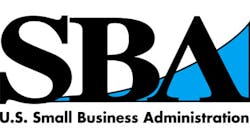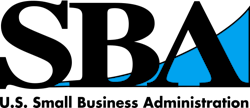SBA 504 loans for dental practices: A case study and step-by-step guide
A Louisiana dentist uses an SBA 504 loan to finance growth. Here’s why it might be right for your practice, too.
Few endeavors take a greater leap of faith like starting a small business. It takes guts to put yourself out there, convincing consumers to buy into your idea, product or services. You have to become an overnight expert in strategic planning, taxes, payroll, marketing, advertising, production, and human resources. Oh, and then there's financing.
It is a daunting list of perils for entrepreneurs considering startup businesses. Many people choose to work for an established business instead, avoiding any ownership hassles and pitfalls. But according to the United States Small Business Administration (SBA), a government agency that supports small businesses, more than 28 million entrepreneurs have the faith and passion needed to take a chance on their ideas. One such risk-taker is Brandon Martin, DDS, of Martin Family & Cosmetic Dentistry LLC. Dr. Martin chose to start his own practice and then financed growth with an SBA 504 loan ("504 loan").
Dental practices like Dr. Martin's are in a unique position to take advantage of SBA 504 loans, which frequently offer an advantageous fixed rate and low down payment. In this article, we’ll learn more about Dr. Martin’s practice, look at his experience with the SBA 504 loan, and go through a step-by-step guide for securing a SBA 504 loan.
“Start small and grow”
When Dr. Martin graduated from Louisiana State University’s School of Dentistry, he could have simply joined an existing practice as he began his dental career. But he chose to skip that path in favor of his dream of a personalized, patient-focused dental office.
“It could have been easier, maybe quicker. Starting a practice from scratch versus buying into a practice each have their own unique hurdles to get past,” Dr. Martin says. “But I thought it would be best for me to start from scratch; try to start small and grow. And it worked out well in the long run.”
Dr. Martin’s “small and grow” strategy paid off, as the practice he started in 2010 outgrew his leased office within the first year. Increasing patient workloads and his business vision of personalized, quality care required more staff and more space. All of this required more funding to create a customized facility.
“I started the practice using some of my own financial resources. [I] just took it on, we hoped for the best, and made things happen from there,” says Dr. Martin. His approach paid off—the practice began growing much faster than he anticipated, and it wasn’t long before he outgrew his original space.
Financing: A tough nut to crack
Finding the money to start or expand a business can be a tough nut to crack. According to many analysts, such as Dave Mielach of Business News Daily, financing is one of the biggest challenges when starting a business. But the first option Mielach and others recommend is working with experienced lenders certified by the US Small Business Administration. SBA-certified development companies work with small businesses to qualify for an SBA 504 loan to purchase land, buildings, and equipment for their companies.
Working with SBA-certified lenders is also recommended by the National Association of Development Companies (NADCO), the trade association for small business lenders. NADCO works with the SBA to promote small business lending, which has resulted in more than $150 billion in small business project financing.
Finding an SBA 504 lending partner
Meeting Dr. Martin’s needs for a larger practice was going to require some teamwork. Karen Angelle, chief operations officer of NADCO member Louisiana Capital CDC Inc., and Kevin Romero, a loan officer with Rayne State Bank, partnered with Dr. Martin to apply for his SBA 504 loan and walk him through the entire process.
“Dr. Martin needed more space to house his practice, so an SBA 504 loan was a tremendous benefit. He was able to use 90% leverage on the facility, thereby keeping more of his own cash to facilitate the working capital needs of his growing business,” says Angelle.
“Financially, for us at the time, it worked really well,” Dr. Martin says. “We probably were able to do more with our building and our property than we would have just going with a sole bank loan or a regular mortgage.”
_____________________________________________
RELATED: Student loans: Myths about managing debt
_____________________________________________
While some immediately think of endless paperwork, regulations, and slow-moving bureaucracy when a government program is mentioned, Dr. Martin says the SBA application process was quite efficient.
“I would be the first person who would be worried about that kind of thing—that it’s government-related—but they did a great job and gave us the opportunity to be where we are today,” Dr. Martin says. “Lafayette is one of the fastest growing cities in the state, and I’m sure that helped as well. But I don't have any complaints. It was a very pleasant process, and I’m really pleased with it.”
A five-step process
Although loan processes can vary largely depending on the business stage, loan size, loan purpose, and application, obtaining a SBA 504 Loan is basically a five-step process.
Step #1: Make sure the SBA 504 loan is a fit
Before beginning the process, verify the SBA 504 loan is a product that suits your needs by checking the basics. For example, the SBA 504 loan can only be used for fixed assets (e.g., buildings/construction, equipment, land). It can only be used for projects within the US, and is only available to for-profit businesses with a net worth under $15 million and net profits under $5 million. Borrowers must inject at least 10% of the cost of the asset to qualify. If you fit these basics, move on to Step 2.
Step #2: Contact a Certified Development Company (CDC)
Because an SBA 504 loan is backed by the government, banks and other lenders are not authorized to issue SBA 504 loans directly. Certified Development Companies (CDCs) are located throughout the nation and are authorized by the SBA to offer SBA 504 loans. Reach out to a CDC that operates in your state and speak with a business development officer. He or she can verify that the SBA 504 loan is a good fit and start you on the application journey. For example, Dr. Martin’s CDC was able to provide a realistic sense of the lending process during an initial consultation.
The SBA has a full list of active CDCs online, listed by the state that they operate in. For additional guidance in selecting a CDC, contact NADCO, a trade association for CDC lenders.
Step #3: The paperwork
One myth about government lending is that it requires extra paperwork. In fact, only a few additional forms are required to process an SBA 504 loan when compared to what a bank would require. Borrowers work with the CDC through the standard paperwork (tax forms, balance sheets, and business plans if a startup). Depending on loan type, appraisals and environmental investigations may be required. After all requirements have been met, the CDC will submit the loan request package for approval to the SBA.
Step #4: Third-party lenders
An SBA 504 loan is typically comprised of a 10% borrower capital injection, a 40% 20-year fixed rate loan obtained through the CDC, and a 50% loan by a bank or third-party lender. The CDC will partner with the best third-party lender to meet specific needs.
Step #5: Closing
After receiving the green light from the SBA, all that’s left is to cross the “t’s” and dot the “i’s.” SBA-designated closing attorneys will work with the borrower, the CDC, and the third-party lender to ensure everything is official to move forward with the loan.
Open for business
Now that the dust has settled and his new facility is open, Dr. Martin takes stock of all that has been accomplished. He feels his dream is realized. “We’ve pretty much filled up this new office already, and that’s about the max for me,” he says. “Balance is the key. I think it’s a matter of being financially stable but still enjoying my time with my patients and my staff, not overworking anyone, not running off employees, and just giving everyone a nice place to work. [...] And I like it this way.”
For more information concerning the National Association of Development Companies (NADCO), the SBA 504 loan program, or other small business success stories from NADCO-member institutions, contact Rachel O’Sullivan at Vox Optima LLC at rachel.osullivan@voxoptima.com or (760) 310-4146.
Editor's note: This article first appeared in the Apex360 weekly e-newsletter. Not a subscriber? Get your free subscription here for exclusive dental industry news, opinion, and advice delivered right to your inbox. Subscribers also receive a free copy of the Apex360 digital magazine, published every two months and featuring in-depth stories for both practitioners and industry professionals.








